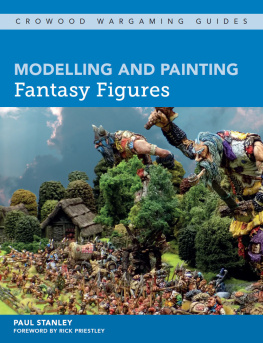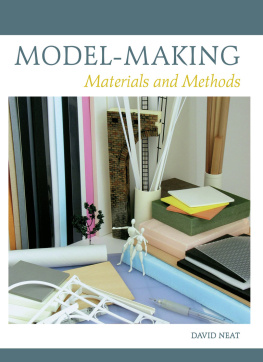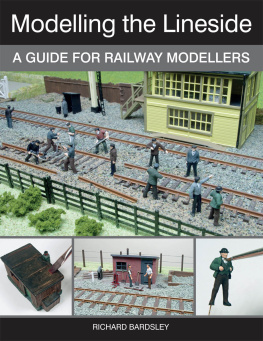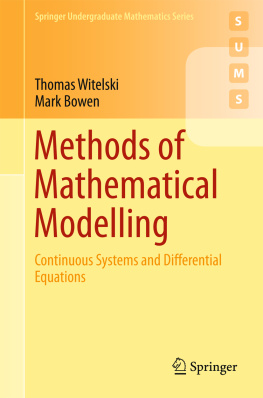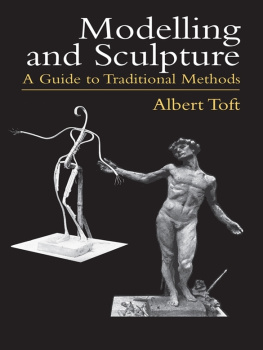ARTISTIC AND SCIENTIFIC
TAXIDERMY AND MODELLING
A MANUAL OF INSTRUCTION IN THE METHODS OF PRESERVING AND REPRODUCING THE CORRECT FORM OF ALL NATURAL OBJECTS INCLUDING A CHAPTER ON THE MODELLING OF FOLIAGE
BY
MONTAGU BROWNE, F.G.S., F.Z.S., ETC.
CURATOR OF THE LEICESTER CORPORATION MUSEUM AND ART GALLERY; AUTHOR OF PRACTICAL TAXIDERMY, THE VERTEBRATE ANIMALS OF LEICESTERSHIRE AND RUTLAND, ETC.
WITH 22 FULL-PAGE ILLUSTRATIONS AND 11 ILLUSTRATIONS IN TEXT
1896
Taxidermy
Taxidermy (from the Greek for arrangement of skin) is the art of preparing, stuffing, and mounting the skins of animals (especially vertebrates) for display (e.g. as hunting trophies) or for other sources of study. Taxidermy can be done on all vertebrate species of animals, including mammals, birds, fish, reptiles, and amphibians. A person who practices taxidermy is called a taxidermist. Taxidermists may practice professionally for museums or as businesses, catering to hunters and fishermen, or as amateurs, such as hobbyists, hunters, and fishermen. To practice taxidermy, one should be very familiar with anatomy, sculpture, and painting, as well as tanning.
The preservation of animal skins has been practiced for a long time. Embalmed animals have even been found with Egyptian mummies. Although embalming incorporates the use of lifelike poses, it is not technically considered taxidermy though. The earliest methods of preservation of birds for natural history cabinets were published in 1748 by the French Academician Raumur, and four years later, techniques for mounting were described by M. B. Stollas. By the eighteenth century, almost every town had a tannery business. In the nineteenth century, hunters began bringing their trophies to upholstery shops, where the upholsterers would actually sew up the animal skins and stuff them with rags and cotton. The term stuffing or a stuffed animal evolved from this crude form of taxidermy. Professional taxidermists prefer the term mounting to stuffing however. More sophisticated cotton-wrapped wire bodies supporting sewn-on cured skins soon followed.
In France, Louis Dufresne, taxidermist at the Musum National d'Histoire Naturelle from 1793, popularized arsenical soap (utilising the chemical Arsenic) in an article titled, Nouveau Dictionnaire DHistoire Naturelle (18031804). This technique enabled the museum to build the greatest collection of birds in the world. Dufresne's methods spread to England in the early nineteenth century, where updated and non-toxic methods of preservation were developed by some of the leading naturalists of the day, including Rowland Ward and Montague Brown. Ward established one of the earliest taxidermy firms, Rowland Ward Ltd. of Piccadilly. Nevertheless, the art of taxidermy remained relatively undeveloped, and the specimens that were created remained stiff and unconvincing.
The golden age of taxidermy was during the Victorian era, when mounted animals became a popular part of interior design and decor. For the Great Exhibition of 1851 in London, John Hancock, widely considered the father of modern taxidermy, mounted a series of stuffed birds as an exhibit. They generated much interest among the public and scientists alike, who considered them superior to earlier models and were regarded as the first lifelike and artistic specimens on display. A judge remarked that Hancock's exhibit will go far towards raising the art of taxidermy to a level with other arts, which have hitherto held higher pretensions.
In the early twentieth century, taxidermy was taken forward under the leadership of artists such as Carl Akeley, James L. Clark, Coleman Jonas, Fredrick and William Kaempfer, and Leon Pray. These and other taxidermists developed anatomically accurate figures which incorporated every detail in artistically interesting poses, with mounts in realistic settings and poses. This was quite a change from the caricatures popularly offered as hunting trophies. The methods of taxidermy have substantially improved over the last century, heightening quality and lowering toxicity. The animal is first skinned in a process similar to removing the skin from a chicken prior to cooking. This can be accomplished without opening the body cavity, so the taxidermist usually does not see internal organs or blood. Depending on the type of skin, preserving chemicals are applied or the skin is tanned. It is then either mounted on a mannequin made from wood, wool and wire, or a polyurethane form. Clay is used to install glass eyes, which are either bought or cast by the taxidermist themselves.
As an interesting side note, with the success of taxidermy has come the sub-genre of rogue taxidermy; the creation of stuffed animals which do not have real, live counterparts. They can represent impossible hybrids such as the jackalope and the skvader, extinct species, mythical creatures such as dragons, griffins, unicorns or mermaids, or may be entirely of the makers imagination. When the platypus was first discovered by Europeans in 1798, and a pelt and sketch were sent to the UK, some thought the animal to be a hoax. It was supposed that a taxidermist had sewn a ducks beak onto the body of a beaver-like animal. George Shaw, who produced the first description of the animal in the Naturalist's Shunga Miscellany in 1799, even took a pair of scissors to the dried skin to check for stitches. Today, although a niche craft, the art of taxidermy - rogue or otherwise, is still thriving.
M ODEL OF A RUINED B ELFRY -W INDOW, WITH B ARN -O WL AND Y OUNG.
TO
Sir William henry flower,
K.C.B., D.C.L., LL.D., Sc.D., F.R.S., E TC .,
DIRECTOR OF THE BRITISH MUSEUM (NATURAL HISTORY),
THIS VOLUME IS,
BY PERMISSION, DEDICATED
AS A TRIBUTE OF GRATEFUL FRIENDSHIP AND ESTEEM, AND IN RECOGNITION OF HIS SYMPATHY WITH ALL WHICH TENDS TO ELEVATE THE ARTS OF TAXIDERMY AND MODELLING, AND THE STATUS OF MUSEUMS GENERALLY.
PREFACE
S OME years have elapsed since the publication of a work from my pen entitled Practical Taxidermy, which, despite its elementary character, hasjudging from numberless letters received from all quarters of the globebeen of some service to its readers.
Since that time, the gratifying strides made by taxidermists towards a better understanding of their art, and by museum authorities towards a more scientific exposition of natural objects, have emboldened me to describe methods of taxidermy and modelling not yet published, most of which are, indeed, absolutely novel, and at present confined to the Leicester Museum.
Although many of the processes described are somewhat advanced and necessarily technical, yet, as the old methods of work have been re-described, corrected, and have had new light thrown upon them, the learner is easily led from the known to the unknown, the stages being so defined that he need not be alarmed at the magnitude of the task set him. Moreover, the writer is always ready, as of old, to render any further assistance to his readers if, when they write, a properly addressed envelope for reply be enclosed.


